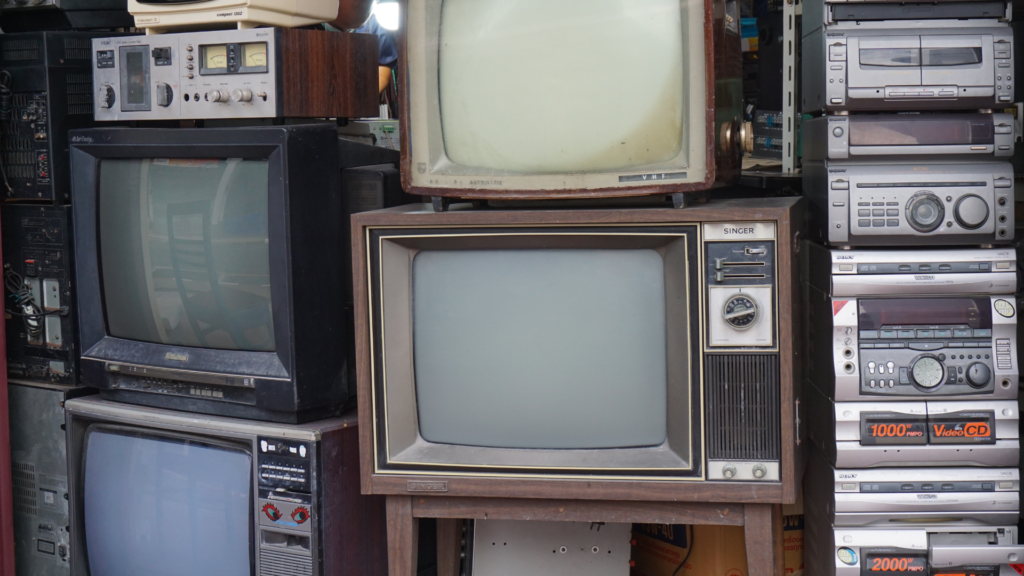With the fast-evolving technology of today, it’s no surprise that our TVs have come a long way since their inception. From black and white to high definition to smart TVs, televisions have gone through quite an evolution in the past several decades. In this blog post, we’ll be looking at television technology throughout the years and discussing how it has changed over time. From CRTs and VCRs to HDTVs and 4K TVs, let’s take a look back at all the different types of TVs from the past to the present.
The Early Days of Television
The early days of television were filled with a sense of wonder and excitement. People were amazed by the images they saw on the screen, and there was a lot of experimentation with the technology. Early television sets were large and bulky, and the picture quality was not very good. There was also no sound, so people had to rely on their imagination to create the audio for the programs they were watching.
One of the earliest types of television was mechanical television, which used spinning disks to create moving images. This technology was first demonstrated in 1884, but it did not become widely available until the 1930s. Another early type of television was called Radiovision, which used radio waves to transmit images. Radiovision was developed in the 1920s and could be used to send live images over long distances.
Television has come a long way since its early days. Today, there are many different types of TVs on the market, from high-definition screens that provide crystal-clear images to portable TVs that you can take with you wherever you go. Whatever your needs, there is sure to be a TV that is perfect for you.
The First Commercial Television
The first commercial television sets were very expensive, and only a handful of people could afford them. The first mass-produced television set was the RCA 630-TS, which was released in 1939. This set was much more affordable than the earlier sets, and it quickly became popular. The first commercial television sets were quite primitive by today’s standards. They had black-and-white images and sound quality that was often poor. Nonetheless, these early sets were a breakthrough at the time and ushered in a new era of entertainment.
Colour Television
Colour television was first demonstrated in 1928, but it did not become commercially available until the late 1940s. Early colour televisions were large and expensive, and the picture quality was not very good. They became more popular in the 1960s when they became smaller and cheaper. The picture quality also improved, although it was still not as good as black-and-white television. Today, almost all televisions are colour televisions. The picture quality is much better than it was in the past, and there are many different types of colour television sets available.
Flat Screen TVs
Flat Screen TVs are the latest and greatest in television technology. They offer a sleek, minimalistic look that is perfect for any home décor. Flat Screen TVs also have many features that make them the ideal choice for any television viewer. Some of the most popular features of Flat Screen TVs include:
- A Wide Viewing Angle: This allows you to see the TV from anywhere in the room.
- High Definition: You’ll get a clear picture with HD channels and movies.
- Energy Efficiency: These TVs use less energy than traditional tube TVs.
If you’re looking for a new TV, a Flat Screen TV is the way to go!
Smart TVs
For a long time, people have been using televisions as a source of entertainment. The technology behind televisions has changed a lot over the years, and there are now many different types of TVs to choose from. One type of TV that has become increasingly popular in recent years is the smart TV.
A smart TV is a TV that is connected to the internet and can run apps and access online content. Many of them also come with features like voice control and built-in cameras. This type of TV offers a lot of advantages over traditional TVs, and it’s no wonder that they are becoming more and more popular. If you are looking for a new TV, then a smart TV might be the right choice for you. In this article, we’ll take a look at some of the best smart TVs on the market so that you can find the perfect one for your needs.
The Future of Television
The future of television is looking very bright. Many new and innovative technologies are being developed that will change the way we watch television. One of the most promising new technologies is 4K resolution. This is a type of resolution that is four times the resolution of HDTV. 4K resolution will provide a much sharper image and will be able to display more detail than ever before.
Another exciting new development in television technology is OLED known as organic light-emitting diode displays. OLED displays are much thinner and more energy efficient than traditional LCDs. They also provide a wider colour range and better contrast ratio than LCDs. OLED displays are already being used in some high-end TVs, and it is expected that they will become more common in the future as prices come down.
Yet another area where television technology is evolving is in the area of content distribution. In the past, most TV content was distributed through cable or satellite providers. However, with the advent of high-speed Internet, there are now many options for distributing TV content online. It also includes newer services that offer live streaming of cable channels without the need for a traditional cable or satellite subscription.
When it comes to TVs, there is no shortage of options available. From the classic CRT models from decades ago to today’s hi-tech OLED and LED screens, the variety of choices is sure to make any tech enthusiast excited. No matter which type you choose, one thing is for certain you will never be bored with your TV again! So if you’re in the market for a new set or just want to keep up on all of today’s technological advancements, take some time out of your day and learn more about these different types of televisions.




